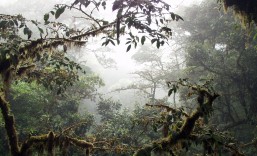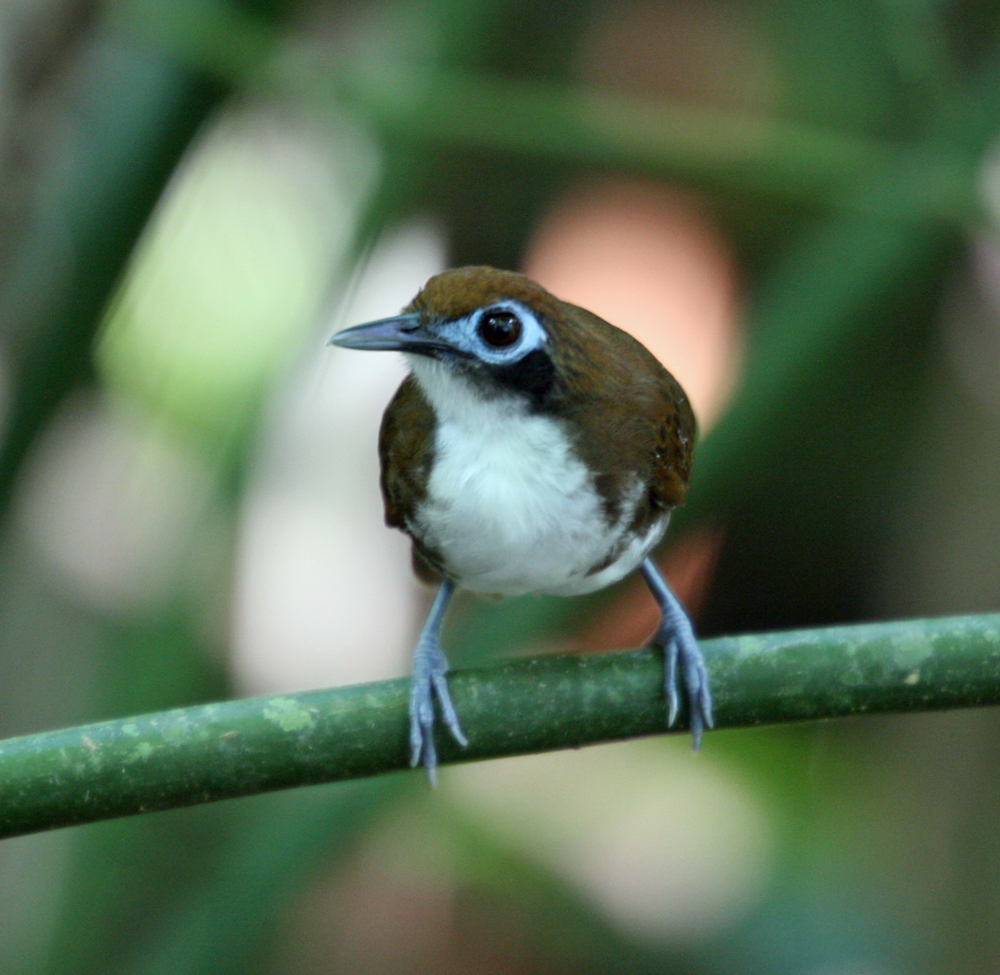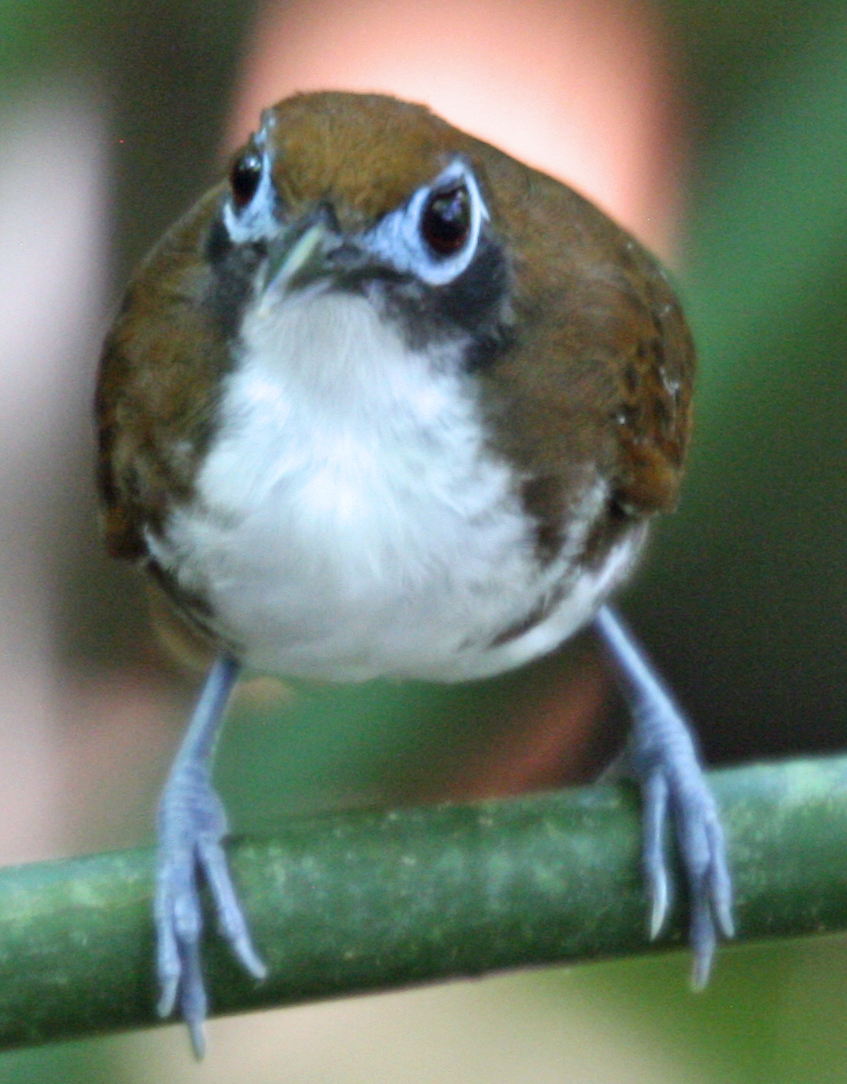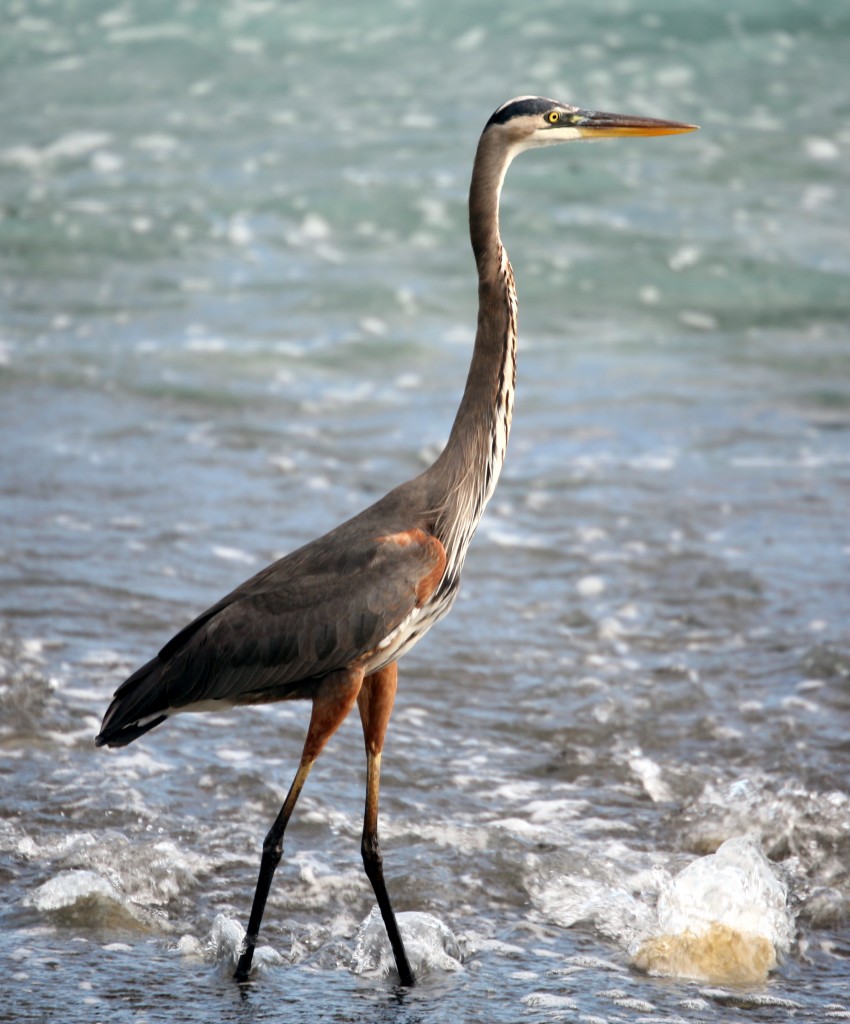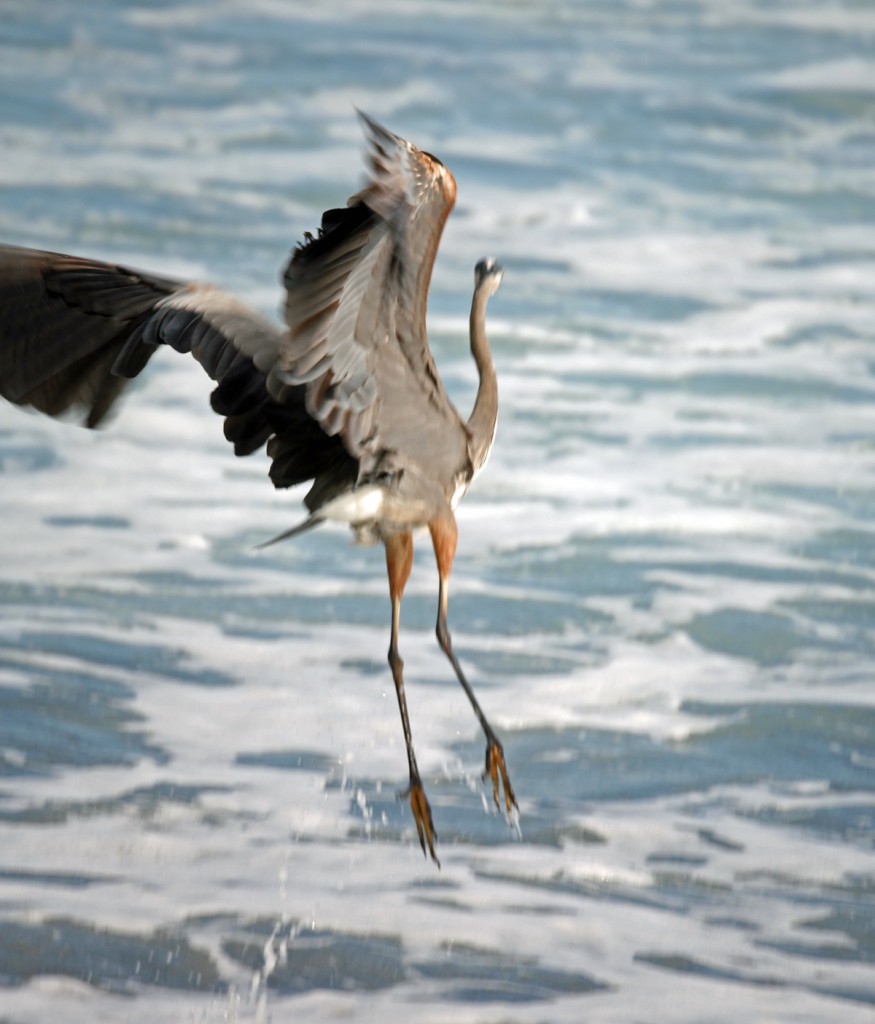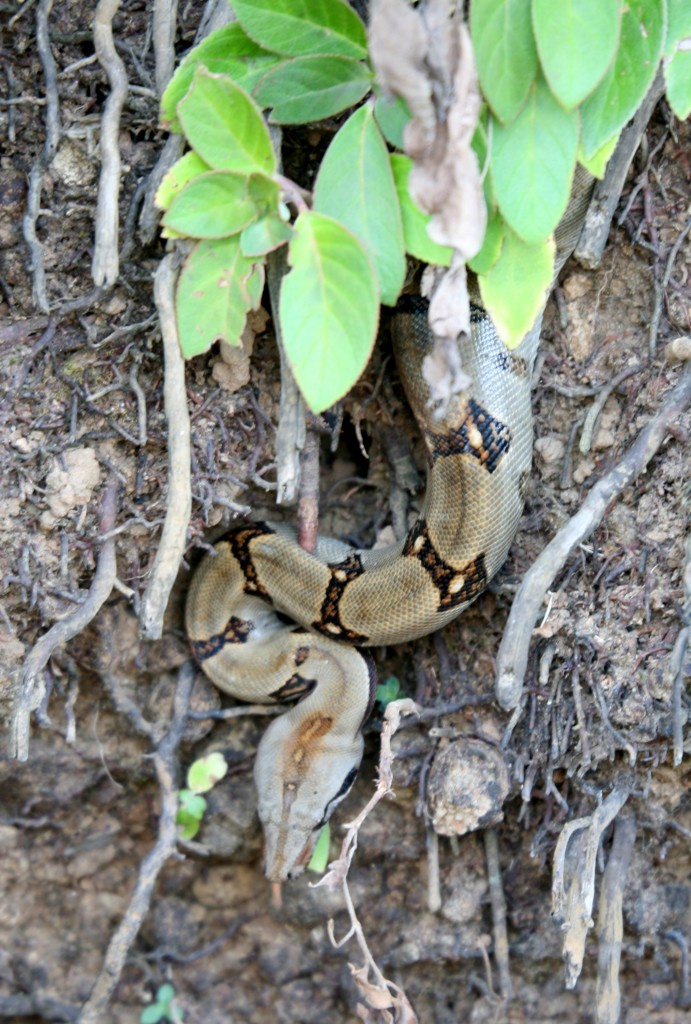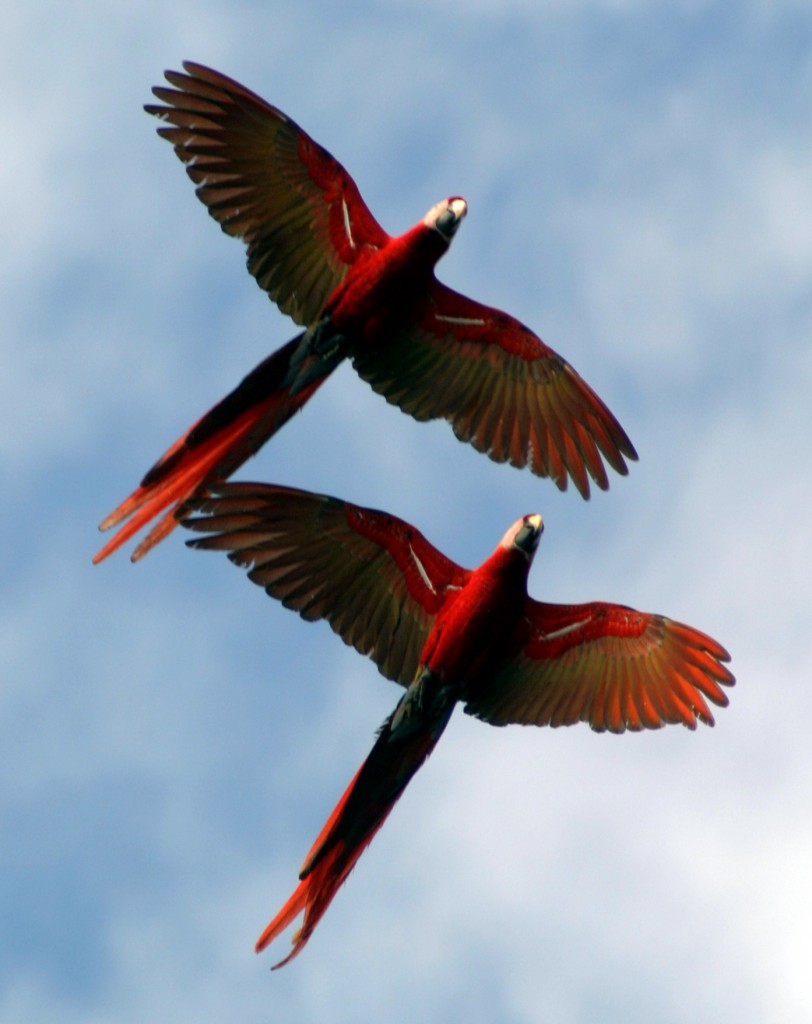I’m especially fond of Bicolored Antbirds (Gymnopithys leucaspis) because the blue orbital skin around their eyes makes them look like they’re wearing goggles. I’ve often seen them flitting low by the trails around Luna Lodge, seemingly following along on the hike and staring at us. More likely they’re scouting out swarms of army ants. Although antbirds don’t typically eat ants, they appreciate the multitude of bugs that hunting army ants stir up from the forest floor. Why waste energy pecking about on the ground when tens of thousands of marching insects will do it for you?
All media is copyright costaricawildlife.net, 2013.
